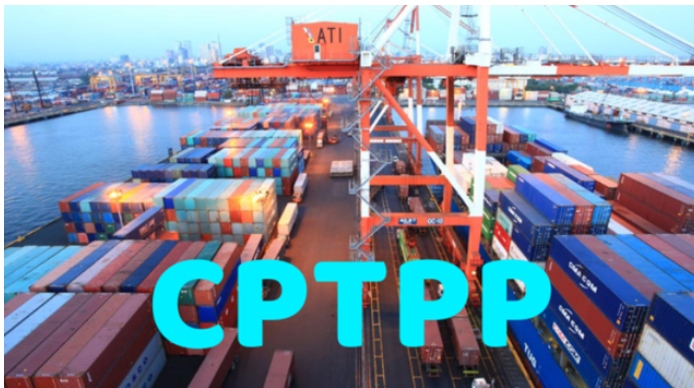How to capitalise on major advantages to increase exports to the Americas
VOV.VN - The Comprehensive and Progressive Agreement for Trans-Pacific Partnership (CPTPP) has made an important contribution to expanding the export of Vietnamese goods to the Americas, which boasts great potential for future growth.
Three years on from the implementation of the CPTPP, Vietnamese export turnover to markets in the bloc such as Canada, Mexico, and Peru have recorded impressive growth.
This shows that the CPTPP has been making an important contribution to paving the way for local goods to penetrate the Americas market.
This comment was shared by experts and business representatives during a recent seminar held on leveraging the CPTPP in a bid to increase exports to the Americas organised by the Industry and Trade Magazine.
Statistics highlight that Vietnamese exports to Canada reached roughly US$5.3 billion last year, duly representing a rise of about 75%.
Similar to Mexico, Vietnamese exports to the North American nation hit US$4.6 billion in 2021, an increase of over 100% compared to before the CPTPP Agreement came into force.
Vo Hong Anh, deputy head of the Department of European and American Markets under the Ministry of Industry and Trade, said that the structure of exports to the Americas market mainly consisted of phones, components, electronics and computers, machinery, spare parts, and garments and textiles.
During the opening nine months of the year apparel exports to the Canadian market grew by over 50% compared to the same period from last year, said Vo Hong Anh.
From the perspective of businesses and industries, Phan Thi Thanh Xuan, vice president and general secretary of the Vietnam Leather, Footwear and Handbag Association (Lefaso), assessed that the CPTPP had brought about some great changes to the footwear industry, especially in terms of export growth.
"In the past, enterprises in CPTPP countries only accounted for less than 10% of the total export turnover of Vietnam's leather and footwear industry, but now this number has increased to more than 14%," Xuan stated.
The biggest advantage of the CPTPP was also named by Xuan, which is the requirement to meet the rules of origin in order to enjoy relevant incentives. This is the primary driving force to promote the development of domestic raw materials and production chains.
As a result, the nation has invested more heavily in the supply chain of raw materials over recent years.
“In the process of meeting the requirements of the CPTPP, the internal capacity of leather and footwear enterprises has also been greatly enhanced. Specifically, activities regarding import and export procedures meeting the criteria and requirements of the export market have caused businesses to change in investment and development in the past period," Xuan stated
Representatives of various enterprises and management agencies highly appreciate the extent to which Vietnamese firms have taken advantage of incentives from the Americas markets over recent years, a factor which has led to strong growth steps, with there being huge potential to exploit this market.
However, some of the difficulties and obstacles faced by enterprises when accessing this market include geographical factors, particularly as this is an area with a distant geographical location which increases the cost and time of transportation.
In addition, firms also face challenges in terms of market standards, especially for the North American market.
According to Anh, although all four CPTPP nations in the Americas region are countries with relatively high economic openness, for example Canada has 15 FTAs and Chile has 29 FTAs, Vietnam has not yet taken full advantage of these factors to promote exports to other countries in the Americas.
To analyse this more clearly, Anh said that enterprises can consider, combine, and co-operate in production and business activities, export raw materials and accessories to Mexico, then co-operate in production and perfecting products for continual exports to another country, with which Mexico has an FTA.
In terms of meeting the rules of origin of FTAs, the nation can take full advantage of tariff preferences with third countries.
“For Chile and Peru, which have very open economies, through these two countries, Vietnam can take advantage to bolster exports to other South American markets, because Chile has FTA with the Southern Common Market (MERCOSUR),” shared Anh.
According to Nguyen Thi Thu Trang, director of the Center for WTO and Integration, with the CPTPP, Vietnam boasts many advantages because rival countries have similar products and goods in the ASEAN region, whilst nations outside the region do not have FTAs with countries like Canada or Mexico.
Therefore, products and goods in which Vietnam has an advantage have absolute advantages due to the CPTPP's preferential tariff treatment.
However, geopolitical fluctuations and other factors have the potential to impact Vietnamese advantages in making the most of the CPTPP, Trang went on to say.
“Advantage is still one of Vietnam's strengths in the Americas market, but it does not last too long, so businesses must capitalize on all opportunities at the present time, while preparing to improve their competitive capacity in the coming period," Trang emphasized.


